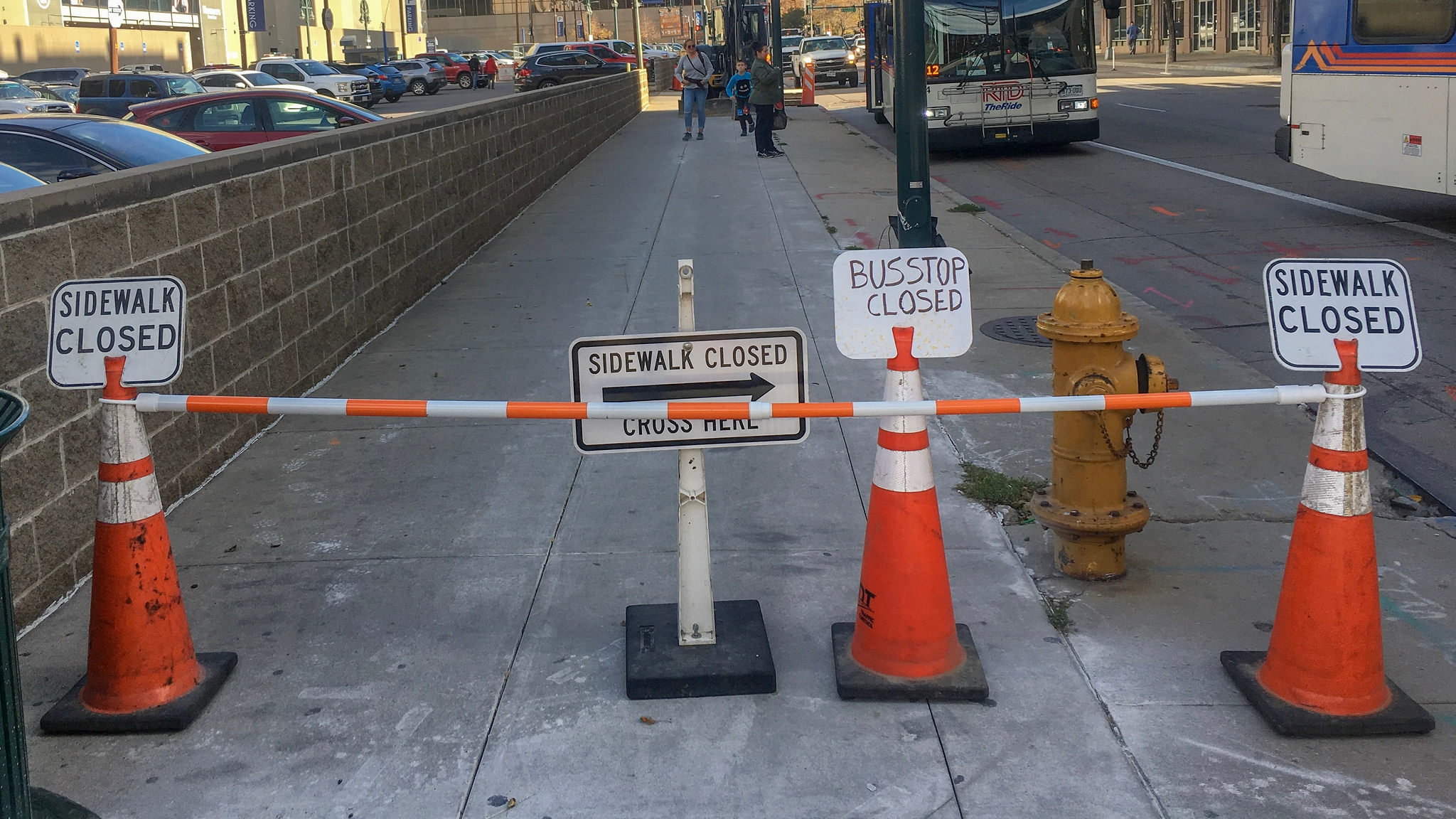You and Your Phone Can Fix Blocked Sidewalks and Bike Lanes at Construction Sites

As Denver’s building boom continues, construction companies often block sidewalks and bike lanes, pushing people on foot and bikes into traffic where they are at risk of being hit by a car. Before changing its policies, the city needs to see examples of how worksites affect cyclists and pedestrians—and advocates for safer streets want the public to use their phones to map and photograph such places before a December 31 deadline.
Today, when people arrive at a sidewalk or bike lane closure, signs frequently suggest confusing and time-consuming detours that can involve crossing the street or taking a longer route. Often these altered paths are unrealistic, and people instead find shortcuts.
“It’s essential that pedestrians be given first priority for the most direct route,” says John Hayden, chair of the Mayor’s Pedestrians Advisory Committee. “They are the most vulnerable user and, as time has shown, they will use the most direct route whether the city wants them to or not.”
The Vision Zero Action Plan requires the Department of Public Works to upgrade its detour policies next year. Although the city does not track cyclists or pedestrian injuries linked to construction sites, stronger rules are considered best practices. Other cities, like Seattle, have already adopted policies that require construction companies to install temporary barricades or roofed scaffolding to offer paths where people can continue walking or biking along the same side of the street.

Today in Denver, some companies create excellent construction reroutes. But with lax policies, many worksites fail to provide safe, direct routes. Earlier this year the Mayor’s pedestrian committee made seven recommendations to improve the city’s rules. But it’s not certain they will all be adopted.
That’s why WalkDenver is asking the public to document where construction sites affect pedestrians and cyclists. The organization created a mobile-friendly online mapping tool that makes it quick and simple for anyone to report locations and share photos.
“We are crowdsourcing examples of both good and bad construction detours to inform this policy update,” says Jill Locantore of WalkDenver. “The data people submit will help document the problem and identify specific fixes needed to make sure walking and biking remain safe and convenient options.”
WalkDenver already shares contributions to the campaign with the social media hashtag #DetoursForPeople and this photo album on Flickr. Next year when the city takes up the issue, the organization will submit the compiled information to the city with the support of the Denver Streets Partnership and the Department of Public Works Vision Zero team.
WalkDenver’s campaign comes at a time when the city is failing to make progress on its goal of reaching zero traffic-related deaths and serious injuries by 2030. So far this year, 56 people have died on the city’s streets, which already surpasses last year’s total of 51.
To highlight a construction detour or reroute, direct your mobile browser to this URL by December 31: bit.ly/DetoursForPeople.


